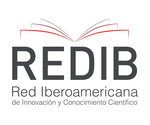Frequency of articular hypermobility in school children between 8 and 14 years of age in a school in the district of San Martin de Porres
DOI:
https://doi.org/10.20453/rhr.v3i1.3746Abstract
Objective: To determine the frequency of AH in school children between 8 and 14 years of age in a school in the district of San Martin de Porres, and to describe the HA according to age, gender, body mass index (BMI) and joints examined. Material and Methods: A descriptive, observational cross-sectional study included 232 schoolchildren. When evaluating, the Beighton score was used to measure the HA and the goniometer to measure joint ranges, electronic scale and height meter to determine the weight and height to calculate the BMI. Results: The frequency of HA was 101 schoolchildren, 63 women and 38 men. According to age, HA decreases except between 11 and 12 years where there is no variation, at 13 years the frequency increases and decreases at 14 years. According to the IMC, 81 schoolchildren with normal weight have (45.5%) HA. The joint with the highest HA was the right elbow 172. Conclusions: The frequency of HA was 101 schoolchildren (43.53%). According to age, it was higher in children of 8 years. According to gender, women have 15% more HA than men. According to BMI, HA was higher in schoolchildren with normal weight 8,5% and according to the joints examined it was greater in the right elbow (74.1%).
Downloads
Published
How to Cite
Issue
Section
License
All articles published in the Revista Herediana de Rehabilitación are under a Creative Commons Reconocimiento 4.0 International license.
The authors retain the copyright and grant the journal the right of first publication, with the work registered with the Creative Commons License, which allows third parties to use what is published whenever they mention the authorship of the work, and to the first publication in this magazine.
Authors can make other independent and additional contractual agreements for the non-exclusive distribution of the version published in this journal, provided they clearly indicate that the work was published in this journal.
The authors can file in the repository of their institution:
The research work or thesis of degree from which the published article derives.
The pre-print version: the version prior to peer review.
The Post-print version: final version after peer review.
The definitive version or final version created by the publisher for publication.











 Esta obra está bajo una
Esta obra está bajo una 